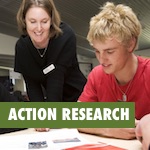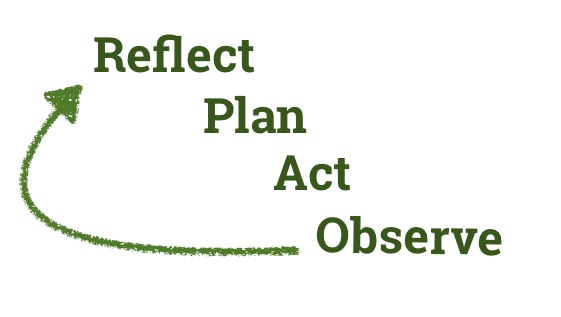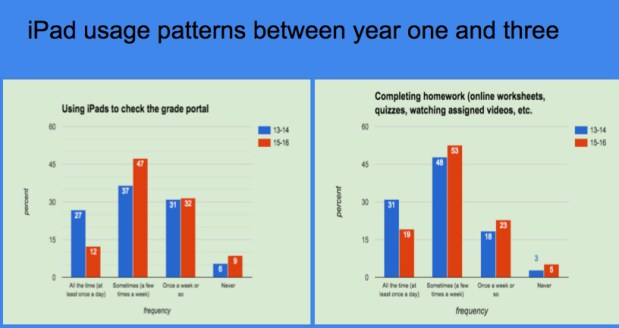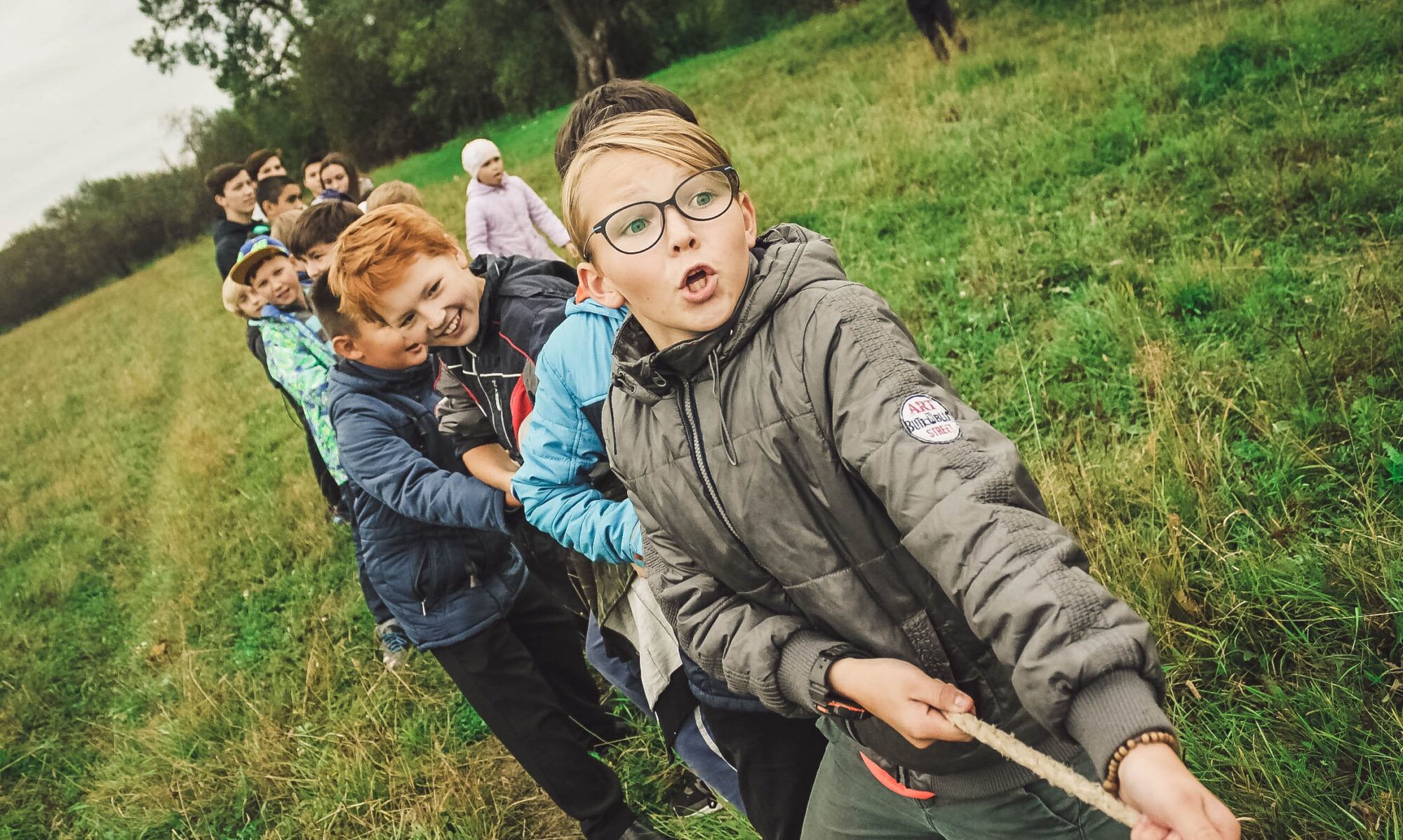Strategies for starting a research project
 Whether the inspiring teacher examples from my last post roused your inner researcher, or you’re just one of those continuous improvement people (as most teachers are), it’s exciting to think that we could have some potential new knowledge creators out there.
Whether the inspiring teacher examples from my last post roused your inner researcher, or you’re just one of those continuous improvement people (as most teachers are), it’s exciting to think that we could have some potential new knowledge creators out there.
So let’s take a look at how to make this work.
Action Research 101
Action research springs from a state of mind: “By systematically studying my practice I can continuously improve and potentially inform others.”
This inquiry stance underpins the major components of an Action research project, as captured in the table below:
| Plain Language | Action Research Lingo |
| What I will study | Abstract and Research Question(s) |
| Practice to be improved | Rationale (and Literature Review) |
| Action to be taken | Implementation Plan |
| Making it systematic | Data Collection and Analysis |
| Improve my practice and potentially inform others | Results and Reflection |
Even in plain language, the components may seem slightly intimidating. Consider the process as something like this:

In simplest terms, the inquiry cycle = plan some stuff, try it out, see what happens, repeat.
Entry points
Start by picking a focus. Here are a few fruitful avenues:
- A problem – What are your main day-to-day dilemmas? What keeps you up at night? What do you repeatedly puzzle over?
- Something cool you are trying – Why do you get up in the morning? What is most exciting to you about your work right now? What risks are you taking?
- A question / curiosity – What do you wonder about? When do you find yourself commenting “well, that’s interesting…”? What practice(s) do you want to try?
If nothing jumps out at you, try looking around a bit. You could browse your favorite sources of innovative practices and ideas (for example, something like Edutopia) or poke around some of the current research.
Pop the question
Once you have a general direction, you will likely need to narrow it. Beware trying to study something too broad or ambitious!
A well crafted research question clarifies the thin slice that you will investigate. It relates the action you will take to the outcome you’re interested in measuring. Here are some examples from participants at the 2016 Middle Grades Institute, with the action and outcome bolded:
- How can project-based learning be structured to promote student engagement?
- How do increased efforts to include student voice and choice in Professional Learning Plans (PLP) influence satisfaction with the PLP process?
- In what ways do the use of Blogger and additional tech tools help 8th grade students increase the quality of their reflections?
- How does the use of literacy strategies in the math classroom help increase student understanding of math problems or concepts?
- When we incorporate mindful practices into our daily schedule, what changes do we see in students’ self-regulation?
- How does the teacher advisory structure provide opportunities for students to develop the skills to act responsibly?
Note that strictly speaking, action research alone is not well suited to establishing direct cause and effect relationships. Yet considering the impact of our actions is the common sense way to launch an investigation.
So word your research question in a way that makes sense to you, and plan to do what professional researchers do: acknowledge the limitations of your study when you share your findings.
Meaningful measurement
Action research is inherently subjective. It doesn’t generate findings that will work in every classroom across the globe. This is its main limitation and its greatest strength: Action research is a good fit for school settings because it recognizes that particular contexts matter. Your particular context matters.
Action research puts meaning at the center; it’s a sense-making process that starts and ends with practical action. Notice that most of the research questions above use student perceptions as the outcome. That’s because the work of teachers is only impactful insofar as it is meaningful for students.
Your bread and butter data will often come from your students. Consider all of the ways that you can get their perspective:
- Surveys (via Google Forms or other platforms)
- Interviews
- Focus groups
- Reflections
- Portfolios or Personal Learning Plans
- Discussions
Whatever sources you use, you’ll want to plan on what data to gather and how you’ll analyze it before you start. You’ll want to capture data in a form that you can analyze. Surveys are great for this because most platforms (for example, Google Forms) will kick out nice and tidy data for questions with a quantitative component (“rate these statements from strongly disagree to strongly agree”).

Other formats require you to record it in a way you can review later. This could be a set of notes and observations, or, if you are looking at student work, you may create a simple rubric that guides your analysis (“rate the extent to which the student’s reflection suggests satisfaction”).

Capturing student reflection with a discrete, consistent set of questions, as in the video above, can provide you with valuable data.
As the researcher, you are a great data source as well. Consider ways that you can capture your own observations:
- Keep a research journal where you record anecdotes and insights
- Record your classroom on video
- Fill out observational checklists to record behaviors of interest
- Periodically reflect in writing, audio, or video on a prompt or theme
Action research involves an intricate web of interpretation. You just want to approach your data collection in a systematic way so that, in the end, you can look for patterns through the lens of your research question.
If possible, try to get three or more data sources so that you can cross-check your conclusions across multiple perspectives. This rule of thumb is called “triangulation” and it is the way that action researchers make their findings as valid as possible.
The ultimate goal is to create a meaningful narrative, backed up by evidence, that captures some lessons learned.
Some final tips
A few things to keep in mind as you embark on this journey:
Course corrections are okay
Like teaching, you may start with a plan and find you need to adapt to emerging circumstances and insights. Data collection plans often change as information starts to flow in, but I’ve even seen researchers alter their research question as their investigative focus shifts. It’s your story.
Get a buddy
Group projects are common and are helpful for spreading the workload and expanding perspectives. At minimum find a mentor or colleague that you can periodically bounce ideas off of.
Share the wealth
The act of packaging your study for sharing is an important part of the process. It forces you to distill your new found knowledge and provides closure. You can share within your school, online, or in a public forum.
What will you research? What story will you tell?


Can you be more specific about the content of your article? After reading it, I still have some doubts. Hope you can help me.